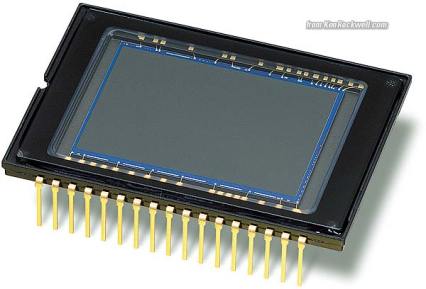Welcome back. Today we will be quickly discussing camera ISO and how we use and control it to create great photos.
ISO
What is it?
ISO is the measurement of the light sensitivity of your image sensor.
ISO stands for International Standards Organization, which is the organization that standardizes measurements internationally, so the settings are consistent from one camera to another and from country to country. This is not to say that every camera handles ISO settings the same, just that ISO 200 is the same across the board for example.
The Sensor
 The camera’s sensor is the light recording mechanism found in digital cameras. It has one job and that is to take light and convert it to a digital signal. There are different types of digital sensors (CCD, CMOS) and each has a slightly different way of completing the task.
The camera’s sensor is the light recording mechanism found in digital cameras. It has one job and that is to take light and convert it to a digital signal. There are different types of digital sensors (CCD, CMOS) and each has a slightly different way of completing the task.
How it works
As light enters the camera lens and passes past the shutter curtains it falls on the image senor.
The light particles (photons) strike different parts of the image sensor and are converted into a digital signal using the photosensitive pixels which cover the sensor. The pixels are only capable of recording a single color, either Red, Green, or Blue (RGB), which when combined in different ways are capable of producing all the colors we see around us. To selectively capture either R, G, or B sensors implement different filters to block all but one of the primary colors. This idea will be explored in greater detail in a future post, but to demonstrate the process here is a great video.
Ok… back to ISO
We know that each pixel records the available light, but it is also possible to increase each pixels sensitivity to that available light, thereby allowing you to take correctly exposed photos when available light is lacking.
ISO is measured in stops. The lower the stop the less sensitive the sensor is to incoming light, the higher the stop the greater the sensitivity to incoming light. Above is a scale showing the ISO whole stops. Some cameras are capable of breaking down this scale into more selective stop (i.e. 125, or 250) and some cameras can go much higher then ISO 6400.
Noise/Grain
While increasing the sensitivity of the sensor allows you to take correctly exposed images with less light, there is a draw back to consider before cranking the ISO up, noise. Image noise is the grainy distortion present in an image that has been taken at high ISO’s.
Above is an image taken at ISO 6400 with our Nikon D300s. If you look at the zoomed in arm region (you can also click the picture for enlargement) you can see the noise present due to shooting at a high ISO.
Not all camera are created equal when it comes to ISO and noise, higher end cameras can take photos at high ISO’s with minimal noise.
Controlling ISO
Sometimes there is no way around noise if you want the shot, but there are ways of controlling it. Aside from shooting at a lower ISO in effort to reduce noise, there are many programs and plug in’s to control digital noise.
When working in Adobe camera raw (ACR) there is a Noise Reduction tool that aids you in smoothing out noise. A similar tool is found in Adobe Lightroom
There are also many different, yet useful plug ins that accomplish the same goal. Topaz Labs offers a product DeNoise that smooths out noise fairly well.
Creative ISO
A general rule of thumb is to use the lowest ISO possible when shooting. This allows you to avoid digital noise. Take this rule with grain of salt however. With modern camera processors and Full Frame image sensors high ISO is not as troublesome as it sounds. Full frame sensors have larger pixels which gather light more efficiently reducing noise. Modern image processors use complex algorithms to reduce noise in an image.
But not all noise is bad. There may be times when you want noise… Whaaat?
Often times noise can be used creatively, especially in B&W images IMO.
Sometimes noise can add a gritty dramatic feel that could not be pulled off without it.
I hope this posts helps those of you who may have been a little confused by ISO.
Click here for previous 101 posts
Next week we will be covering how the big three (Aperture, ISO, & Shutter Speed) work together to create a proper exposure.
If you have any questions or concerns on the post, feel free to email us and we will be glad to help you. Or feel free to email us any questions you may have about photography and we will be sure to work them into another how-to post.
Email me at: will@vivalaveritas.com
Thanks!
(and comments are always appreciated!)
Louisville Wedding Photographer









